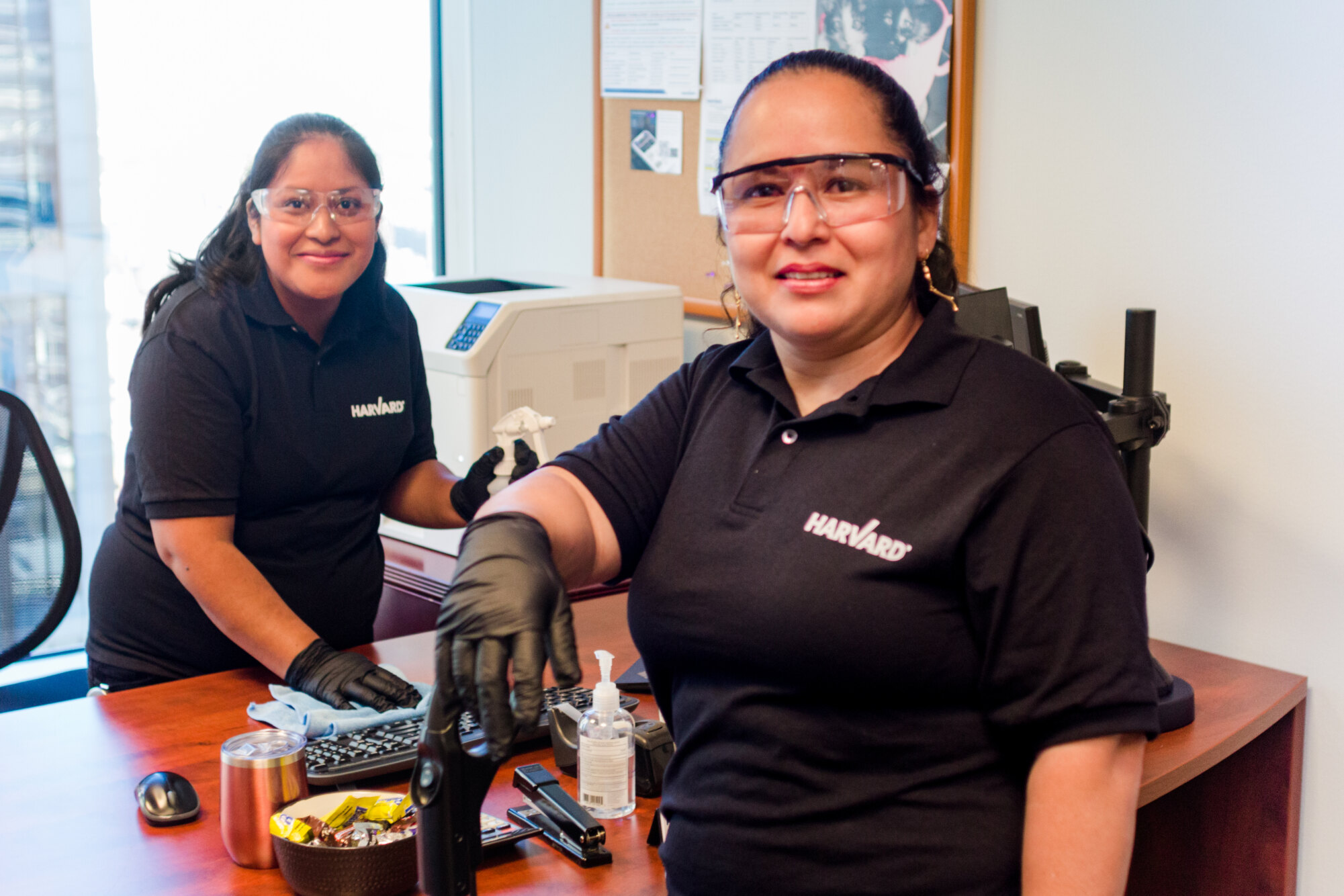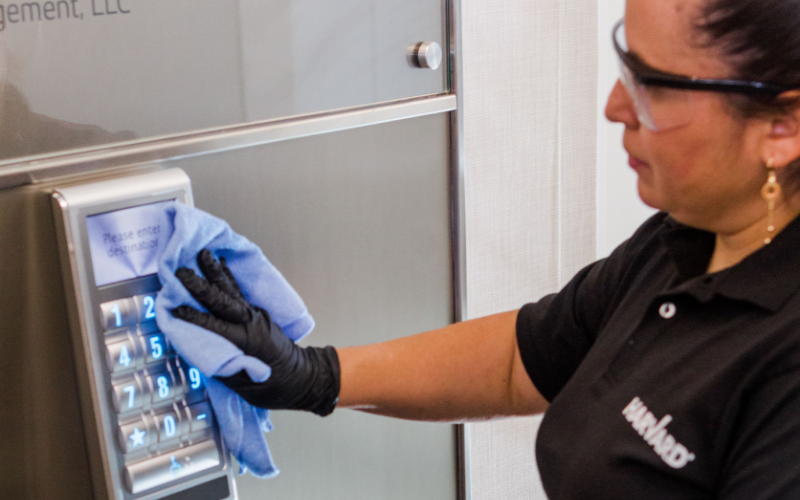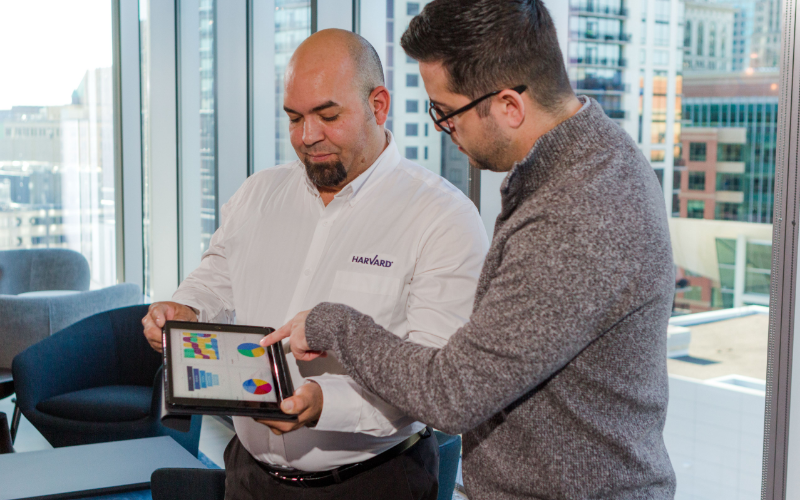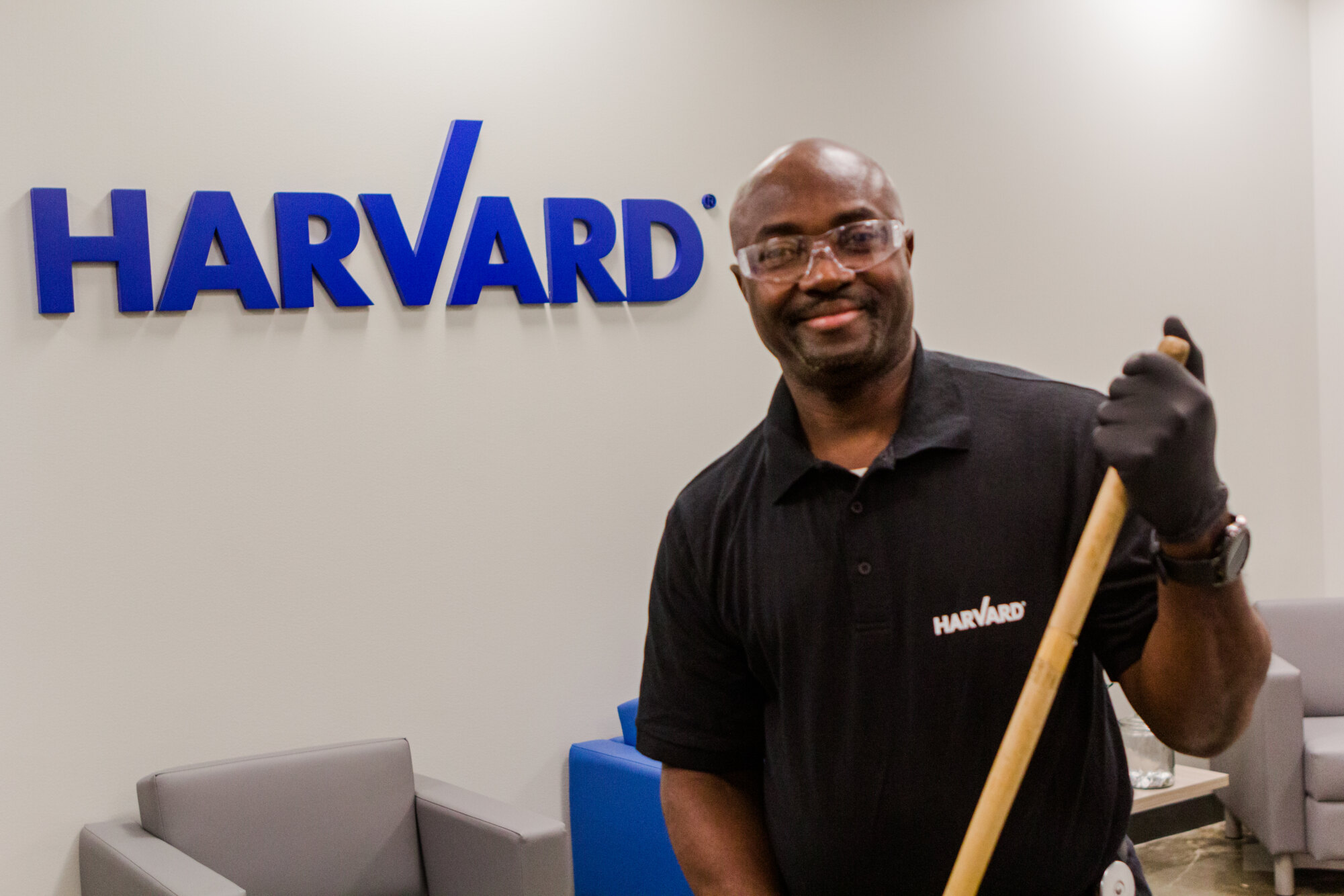
Transitioning a major life science account comes with inherent risks. To safeguard the client’s right to operate, it’s essential to have a comprehensive understanding of their operations, particularly in critical environments and documentation. Harvard recognizes the importance of regulatory oversight and integrates it into the onboarding process for both incumbent and new employees. Ensuring that all employees grasp the significance of our role in the pharmaceutical process and are thoroughly trained according to the customer’s SOPs is vital to our mutual success and the quality of the products our clients manufacture.
When Harvard was awarded the contract for cleaning and sanitization services at the world’s largest pharmaceutical manufacturing company, the priority was clear: ensure a seamless transition that would maintain business continuity, improve total service quality, and, most importantly, enhance the cleaning staff experience. Understanding the critical role that incumbent employees play in ensuring smooth operations, Harvard implemented a strategic engagement and onboarding process designed to foster positive relationships from day one.
Immediate Introduction and Early Engagement
Upon being awarded the contract, Harvard understood the importance of making a positive first impression. The Harvard team immediately introduced themselves to the incumbent employees and facility leaders across all sites. By coordinating 1–2-day introductory and culture discovery sessions in advance, Harvard ensured that the introduction was smooth and respectful of the ongoing operations. These meet-and-greet sessions were crucial in breaking down barriers, allowing the employees to become familiar with Harvard’s culture, core values and expectations. Harvard’s goal was to communicate that the new management team highly valued their experience, knowledge of the facility, existing culture, and overall well-being.

Onboarding and Relationship Building
Harvard’s approach to onboarding was designed to retain the existing workforce, recognizing that the incumbent employees had established relationships with the client and were integral to the facility’s operations. Before rumors or speculation could create uncertainty, Harvard’s Leadership, Operations, and HR team were actively involved, educating employees about the next steps, the benefits, and the compensation packages offered. This transparency and timely and effective communication helped alleviate concerns and ensured a smooth transition.
To further enhance the onboarding experience, Harvard brought in food, drinks, and welcome gifts for the incumbent employees, reinforcing that they were valued team members. When the official Go Live date arrived, the employees were already comfortable with Harvard’s presence.
Recruitment Strategy and Candidate Experience
Harvard’s recruitment strategy for the non-union labor market was a key differentiator in the successful transition. In localities where the labor market presented unique challenges, recruiters were able to get creative in their efforts by leveraging social media platforms and local job boards. The recruitment team communicated consistently with candidates throughout the process, ensuring that the experience was personalized and not merely transactional. A full-time recruiter was dedicated to the account, providing a single point of contact for all candidates. This approach ensured accessibility, quick communication, and a sense of urgency, significantly improving the candidate’s experience.
The recruiter’s enthusiasm for the company set the tone for onboarding. Candidates felt valued and motivated from the moment they applied, leading to higher engagement levels and a smoother transition into their roles. Harvard’s streamlined process, which often completed onboarding within 4 days (compared to the industry average of 2 weeks), putting people first.
Comprehensive Onboarding and Training
Once hired, new employees underwent a thorough onboarding process before their first day on the job. This included multiple touchpoints, ensuring that all necessary documents, background checks, and drug tests were completed in advance. The dedicated recruiter remained the primary point of contact, guiding the new hires through the entire process and answering any questions.
At one location, for example, new hires were required to attend a client-hosted orientation training hosted by the client, followed by operations and safety training provided by Harvard. The Go Live day included a comprehensive new employee training session covering safety, operations, and HR protocols for all locations. Harvard celebrated this milestone with an event that included prizes and gift cards, further reinforcing the company’s culture and commitment to employee morale and satisfaction.

Employee Development and Retention
Harvard recognizes that employee development is crucial for retention and long-term satisfaction. The company has established employee recognition programs, such as Employee of the Month, and milestone celebrations to acknowledge and reward outstanding performance. Additionally, every site has a safety committee, allowing employees to take ownership of safety initiatives and contribute to a safety culture. This proactive approach has reduced injuries, as measured by the Lost Time Incident Rate (LTIR) and has fostered a sense of teamwork and responsibility among employees.
This emphasis on employee engagement and communication has been instrumental in building trust and fostering a positive work environment.
Harvard’s strategic approach to onboarding, recruitment, and employee retention has been key to the successful transition across this client’s facilities. By prioritizing early engagement, transparent communication, and comprehensive support, Harvard has retained the incumbent workforce and created a positive and productive work environment.
























